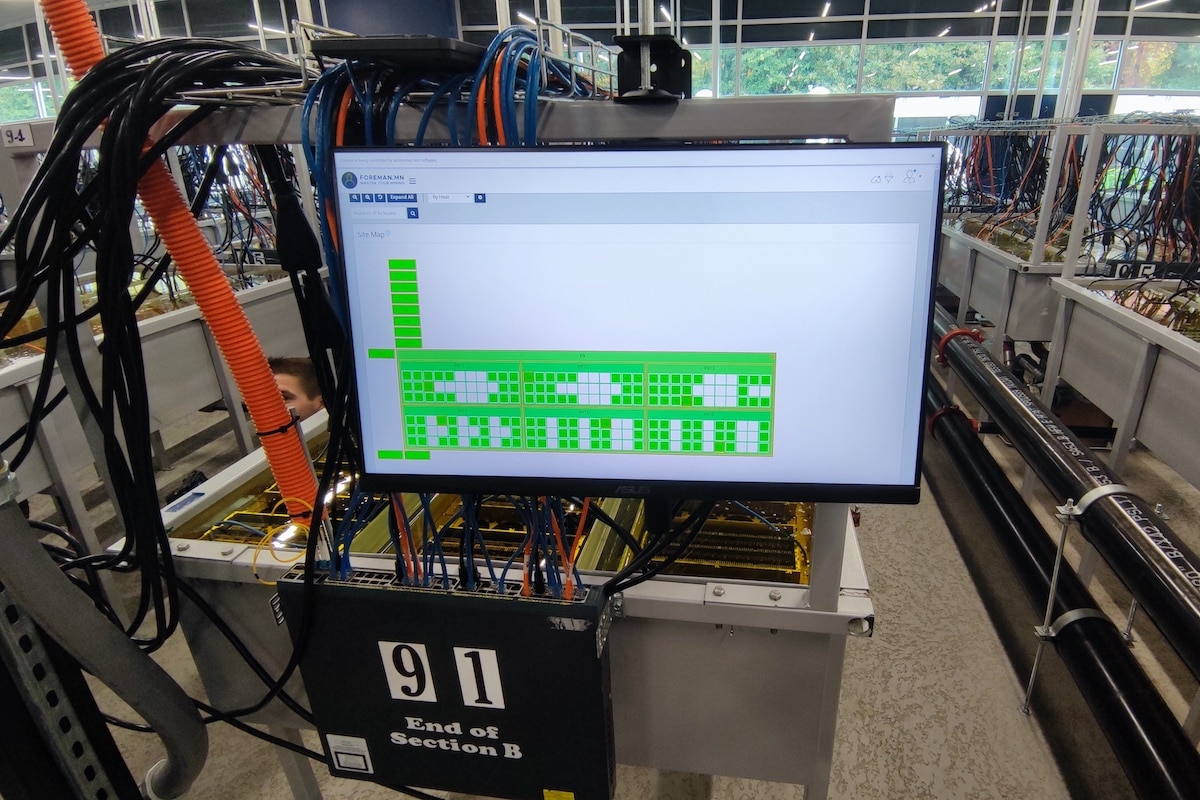Bitcoin mining has come a long way since its genesis block in January 2009.
With all sorts of information and data relevant to the bitcoin mining space, it can be overwhelming for new entrants to learn about the industry and keep track of all the available data tools.
This post provides a repository of useful data services in bitcoin mining and will be periodically updated.
If you think some tools should be here but are missing, send us feedback at research@theminermag.com.
Current Network Hashrate
The Bitcoin explorer on BTC.com displays the current network hashrate using the latest 7-day average (also supporting 1-day, 3-day, and 14-day averages).
Over the years, there were countless media headlines saying Bitcoin’s network hashrate spiked or crashed by 20% or 30% in a day when media outlets failed to realize they were looking at the 1-day average.
Bitcoin’s current network hashrate – whether it’s a 1-day or 14-day average – is back-calculated from the average block production intervals throughout a period. Read this bitcoin mining Wikipedia to learn more.
The block production interval is affected by not only the network hashrate but also pure luck. The shorter the period is, the stronger the effect luck can have on block productions. As such, a 3-day or 7-day moving average is more accurate in measuring Bitcoin’s current network hashrate.
Historical Network Hashrate
CoinMetrics, The Block Data Dashboard, and Luxor
Similarly, when looking at bitcoin’s historical network hashrate, it is also important to use at least a 7-day moving average.
CoinMetrics, The Block, and Luxor all track the historical network hashrate. CoinMetrics makes the raw data downloadable while The Block’s Data Dashboard, sourced from CoinMetrics, makes it easier to embed a hashrate chart into a website’s content management system.
Real-time Hashrate by Pools
Apart from the current network hashrate that is back-calculated from block intervals, there is another way to gauge the network’s real-time hashrate by adding up the real-time data from the APIs of individual pools.
This metric is more useful when trying to see if the network’s hashrate or a pool’s hashrate has had a significant change over the past days due to certain news events — for instance, China’s crackdown on bitcoin mining in June 2021.
Hashprice & Rigprice Indexes
Mining pool Luxor introduced the term Hashprice, which measures the revenue in dollars that 1 TH/s or 1 PH/s of hashrate can generate in 24 hours. It factors in both bitcoin’s network hashrate changes and bitcoin’s daily price volatility.
The mining pool has also been tracking the Bitcoin ASIC Index based on the pricing data from its equipment brokerage service, manufacturer websites, and other third-party channels.
Miner Economics
F2Pool, Poolin, ASICMinerValue, and Braiins
Mining pools F2Pool and Poolin both have a miner ranking page on their sites, which list all the available mining equipment on various blockchain networks, including GPUs and ASIC miners. They compile the power consumption and hashrate of a given equipment model for users to calculate daily revenues, electricity costs, and profits.
ASICMinerValue is a site that tracks similar revenue, electricity cost, and profit metrics but with a specific focus on ASIC equipment.
Braiin, the operator behind the previously called Slushpool, takes it a step further. Their tool supports more detailed parameters where users can calculate their daily returns more precisely, such as one’s unique CapEx and OpEx, whether or not there is ongoing debt to be paid and at what interest rate, etc.
Block Interval
ClarkMoody has a simple yet informative UI that displays various Bitcoin network metrics, including the average block interval since the latest difficulty retarget.
It’s useful to know whether the average block interval since the last difficulty change is faster or slower than 10 minutes because that is indicative of whether the network difficulty will increase or decrease and by how much in estimation at the next adjustment.
Miner Revenue
The bitcoin monthly miner revenue tracked by The Block breaks down the revenue in dollar terms every month by block subsidies and transaction fees.
Public Mining Companies
TheMinerMag tracks various operational data of more than 15 publicly listed mining companies, including their realized hashrate, production, liquidation, balance sheet and cash flow activities, and mining costs.
Geographic Distribution
Cambridge Centre for Alternative Finance
The University of Cambridge’s Center for Alternative Finance maintains a bitcoin mining geographic map.
The map breaks down the geographic distribution of bitcoin’s network hashrate on a monthly basis based on self-reported percentage data from four pools: FoundryUSA, BTC.com, Poolin, and ViaBTC.
However, the data is manually updated sporadically so it may not always be up to date.


